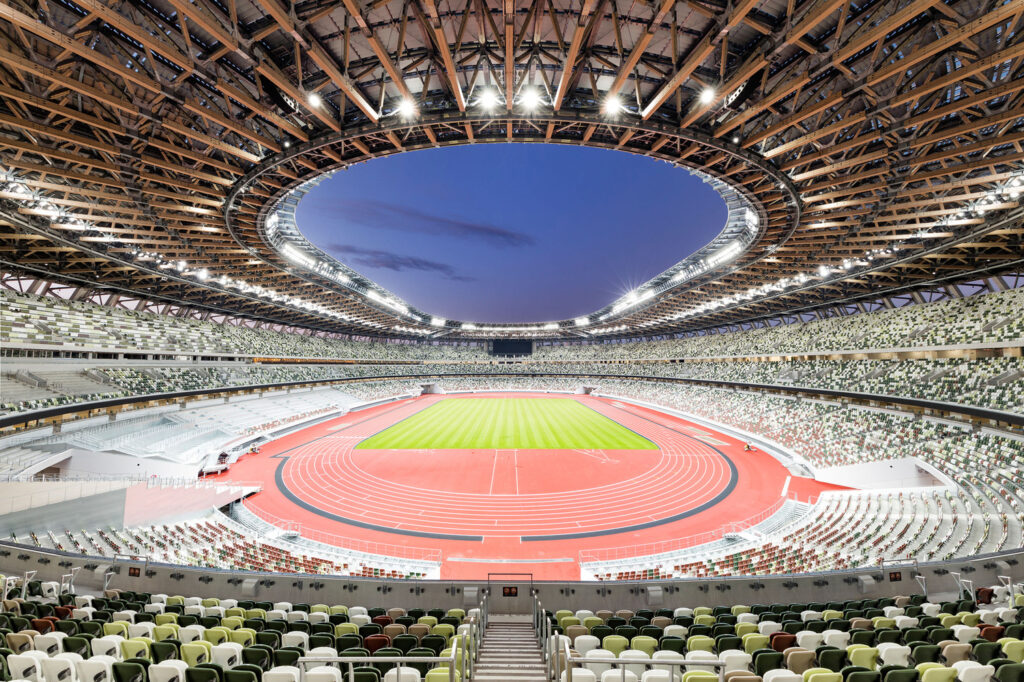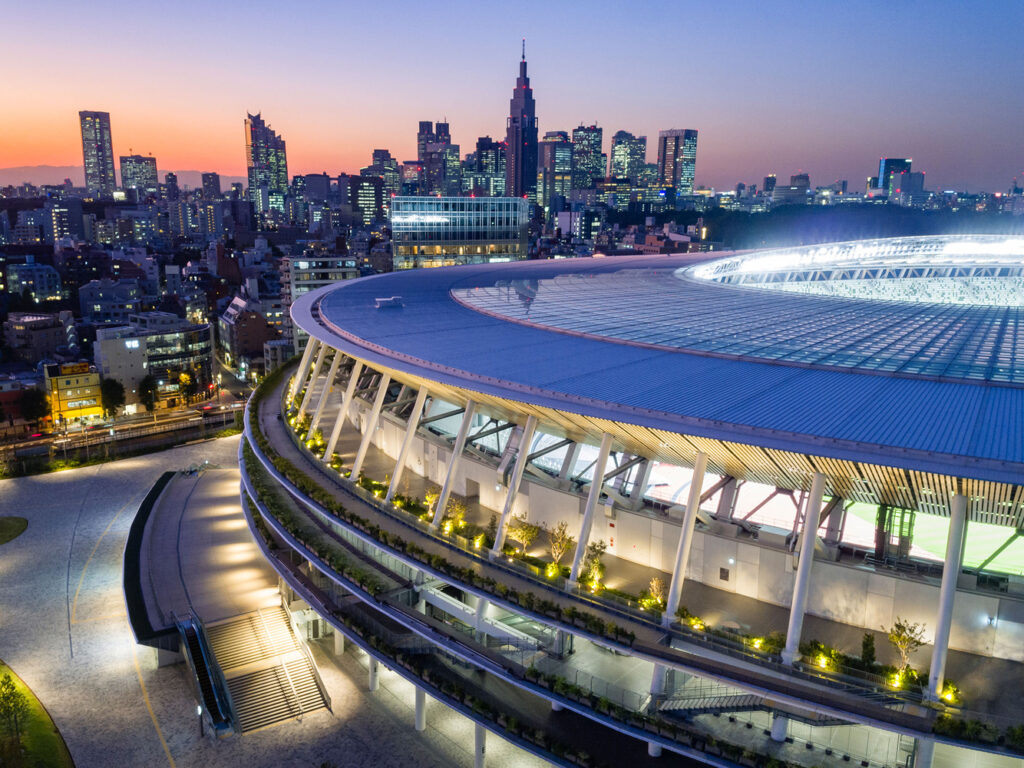The Japanese National Stadium was originally built to host the third Asian Games in 1958, and later hosted the 1964 Olympic Games in Tokyo at that period, and was recently reconstructed with an area of about 192,000 square meters to host the Olympic Games in 2020 (which was postponed due to Covid -19) and the opening and closing ceremonies in addition to athletics and football matches in it, and after the season ends, it will host cultural and sports events (1-3).
The Olympic Amphitheater contributes to displaying the traditional Japanese architecture represented by the layers (cornices), which are an important part of the traditional architecture in Japan, which in turn contributes to creating an environmentally friendly architecture by blocking sunlight and adding a gentle breeze to the terraces (2).

Strength, pride and simplicity… These are the feelings that the designers of the place wanted visitors to evoke when seeing this luxurious architecture (3).
In order to feel a sense of merging with the (Meiji Shrine) forest surrounding the amphitheater, its height was lowered and plants from the forest were planted along (the cornices), in addition to the installation of wood of small diameter on the inner face of the roofs, to show the aesthetics of the Japanese (friezes) (4,2).
for the structural structure of the upper surface of the stadium, it consists of 60-meter cantilevered frames reinforced with steel and timber, which is made up of steel and wooden mesh beams that work on the principle of axial forces to mitigate deformation resulting from either earthquakes or winds (4,2).
For the natural ventilation of the stadium, the designers relied on wind exploitation, The structure of the stadium allowed the effective entry of the monsoon from the sides, and the removal of moisture and hot air from the upper opening. Winter and directed to the inside of the roof (2).
As for the materials used in the seats and foundations, they are recycled materials, and a soft, oil-based damping system was used to absorb the vibrations that the stadium might experience during an earthquake (2). If you want to see more details about the surface installation and method, click Here.

Sources:
- Olympic Stadium [Internet]. Tokyo 2020. [cited 20 July 2021]. Available from: Here
- Japan National Stadium [Internet]. ArchDaily. 2021 [cited 20 July 2021]. Available from: Here
- Sport Facility [Internet]. Jpnsport.go.jp. [cited 20 July 2021]. Available from: Here
- Japan National Stadium – 国立競技場 [Internet]. Kengo Kuma and Associates. [cited 20 July 2021]. Available from: Here




0 Comments